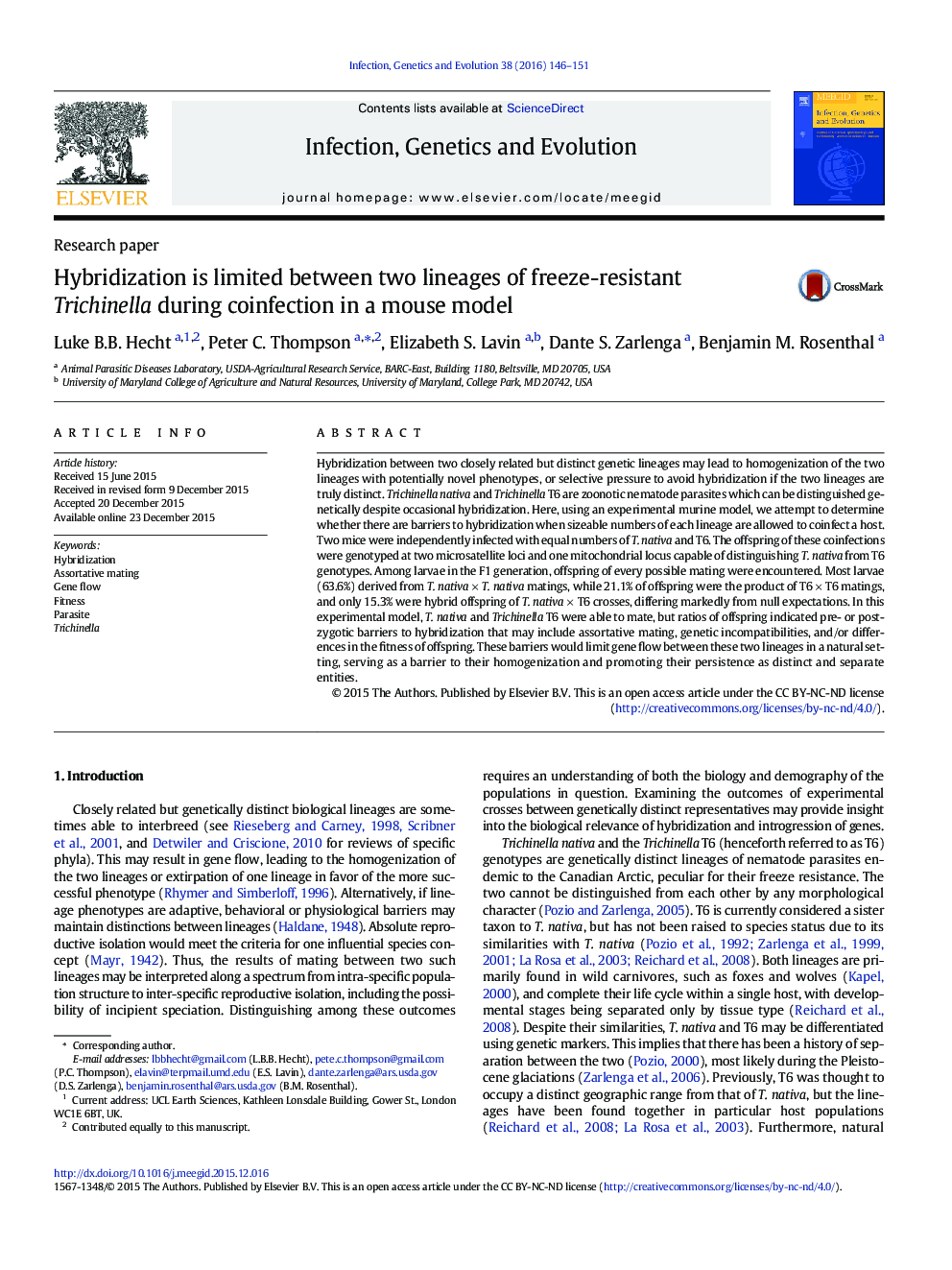| کد مقاله | کد نشریه | سال انتشار | مقاله انگلیسی | نسخه تمام متن |
|---|---|---|---|---|
| 5908499 | 1570165 | 2016 | 6 صفحه PDF | دانلود رایگان |

- Purebred T. nativa and Trichinella T6 offspring accounted for >Â 80% of all offspring following coinfection in mice.
- Fewer hybrid offspring were encountered than expected following coinfection.
- Barriers to hybridization exist between T. nativa and Trichinella T6 in a murine model system.
Hybridization between two closely related but distinct genetic lineages may lead to homogenization of the two lineages with potentially novel phenotypes, or selective pressure to avoid hybridization if the two lineages are truly distinct. Trichinella nativa and Trichinella T6 are zoonotic nematode parasites which can be distinguished genetically despite occasional hybridization. Here, using an experimental murine model, we attempt to determine whether there are barriers to hybridization when sizeable numbers of each lineage are allowed to coinfect a host. Two mice were independently infected with equal numbers of T. nativa and T6. The offspring of these coinfections were genotyped at two microsatellite loci and one mitochondrial locus capable of distinguishing T. nativa from T6 genotypes. Among larvae in the F1 generation, offspring of every possible mating were encountered. Most larvae (63.6%) derived from T. nativa Ã T. nativa matings, while 21.1% of offspring were the product of T6 Ã T6 matings, and only 15.3% were hybrid offspring of T. nativa Ã T6 crosses, differing markedly from null expectations. In this experimental model, T. nativa and Trichinella T6 were able to mate, but ratios of offspring indicated pre- or post-zygotic barriers to hybridization that may include assortative mating, genetic incompatibilities, and/or differences in the fitness of offspring. These barriers would limit gene flow between these two lineages in a natural setting, serving as a barrier to their homogenization and promoting their persistence as distinct and separate entities.
88
Journal: Infection, Genetics and Evolution - Volume 38, March 2016, Pages 146-151